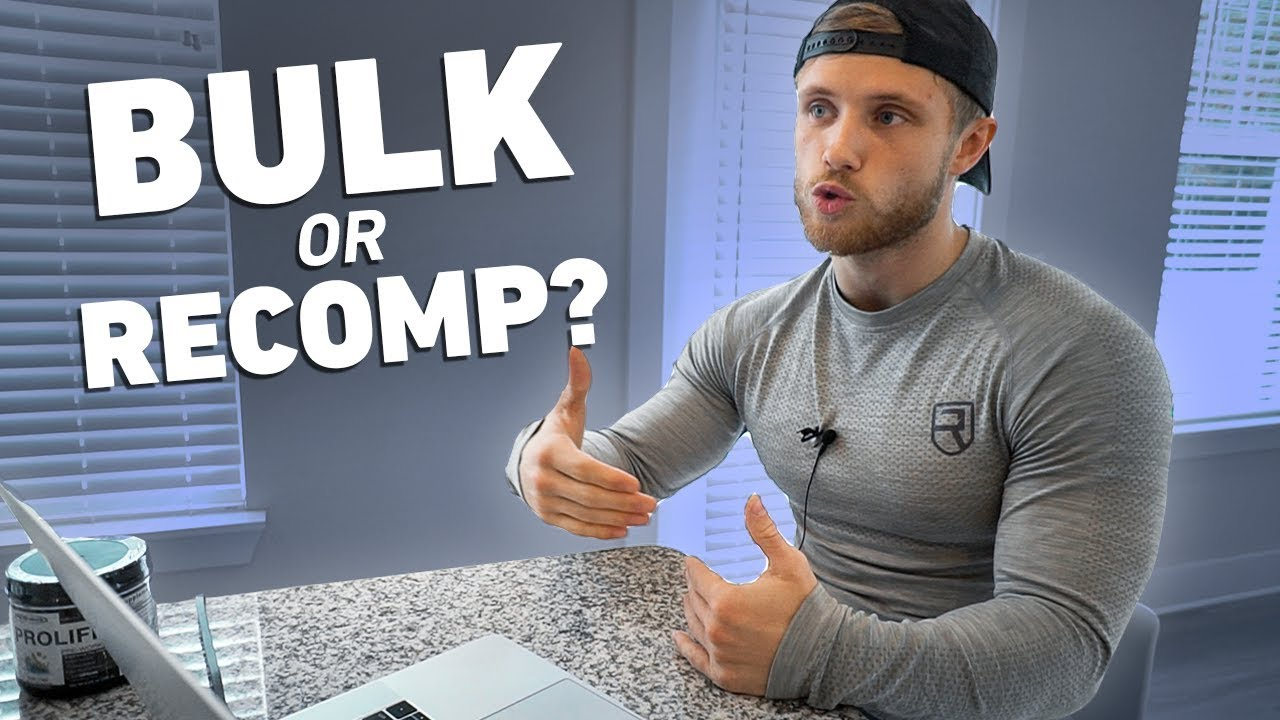In the world of fitness, one of the most debated topics is whether it’s truly possible to build muscle and lose fat at the same time—a phenomenon known as body recomposition. While traditional fitness advice encourages separating these goals into distinct bulking and cutting phases, newer research and practical case studies suggest that, under the right conditions, body recomposition isn’t just possible—it can be quite effective.
Let’s explore this complex topic from the perspective of a seasoned fitness coach, and break down how training history, caloric intake, and physiological factors influence the body’s ability to recomposition.

Understanding Body Recomposition
Body recomposition refers to simultaneously reducing fat mass and increasing muscle mass. This is often seen as a contradiction to the energy balance principle, which states that to gain tissue (muscle or fat), you need a caloric surplus, and to lose tissue, you need a deficit. But the human body is far more nuanced than a simple math equation.
The truth is, tissue-specific changes—like losing fat while gaining muscle—can occur if the conditions are right. These changes depend largely on your training experience, nutritional strategy, and individual physiology.
Poll Results Reveal Widespread Confusion
A recent poll posted across different social media platforms asked whether it’s possible to build muscle in a caloric deficit. When the scenario included a lifter adding direct forearm training during a cut, most YouTube respondents correctly believed it was possible to gain muscle despite being in a deficit. However, Instagram responses were more divided, with a higher percentage believing it wasn’t possible.
What does this reveal? Even among fitness enthusiasts, there’s a lot of confusion about how body recomposition works. Many people assume that if you’re cutting calories, muscle gain is off the table. But this belief doesn’t always align with the latest evidence.
Key Scenarios Where Recomposition Happens
There are several conditions where body recomposition is most likely to occur:
- Beginners (New Lifters): When someone is new to resistance training, their rate of muscle growth is rapid. This early window of “newbie gains” allows for fat loss and muscle growth concurrently, especially when protein intake and training are on point.
- Overweight or Obese Individuals: In these cases, excess body fat can serve as an internal energy reserve. If nutrition and training are structured correctly, the body can utilize fat stores to support muscle growth while still losing fat overall.
- Returning Lifters (Muscle Memory): Individuals who took a break from training due to injury, travel, or other reasons can rebuild muscle much faster upon returning. This phenomenon, known as muscle memory, enables recomposition even during a caloric deficit.
- Those Who Improve Training Quality: Lifters who previously trained inconsistently or with poor intensity but then adopt a focused, progressive overload-based routine can stimulate new muscle growth even while in a deficit.

Advanced Lifters: A More Nuanced Outcome
For intermediate or advanced lifters, the potential for true recomposition becomes less likely, but not impossible. In these cases, the body is closer to its genetic ceiling, and muscle gains come slower. For these individuals, recomposition may still be viable if they focus on:
- Body part specialization (e.g., increasing volume for lagging muscles)
- Small caloric deficits (5-15%) to maintain performance
- Optimized protein intake and nutrient timing
- High-effort, progressive training routines
A lifter who’s cutting while dedicating 20 sets per week to a previously neglected muscle group (like forearms) may still see hypertrophy in that area, particularly if their overall training plan reduces volume elsewhere to accommodate recovery.
Recomposition vs. Traditional Bulking and Cutting
One argument often made against recomposition is that it’s slower than traditional bulk-and-cut cycles. While this is generally true for maximizing muscle growth, many individuals prioritize staying leaner year-round and may not find the added fat from bulking worthwhile.
For some, the added motivation and satisfaction of seeing consistent visual improvements in both fat loss and muscle definition outweigh marginal increases in muscle growth speed. This is especially relevant for people who are lifestyle-oriented rather than performance- or competition-focused.
The Role of Diet: Maintenance or Slight Deficit?
Recomposition tends to work best at maintenance calories or in a slight deficit. Rather than large deficits (which may risk muscle loss), trimming about 5–15% off your maintenance level allows you to support training performance and protein synthesis while still nudging fat stores downward.
Adequate protein intake (generally 1.6–2.2g/kg of body weight) becomes essential in this context. It helps preserve lean tissue and supports muscle recovery and growth, even in the absence of excess energy from a surplus.
Can You Lose Fat in a Surplus?
While it’s theoretically possible to lose fat in a surplus (especially in very untrained or obese individuals), it’s not a practical recommendation for most people. Surpluses typically lead to fat gain unless the training stimulus is extreme or the person is using anabolic steroids.
As a coach, I would rarely suggest someone enter a caloric surplus with the goal of losing fat. Instead, a better approach would be to stay at maintenance or enter a slight deficit, especially for those aiming to improve body composition efficiently.

Research and Real-World Examples
Numerous case studies in natural bodybuilding show that even advanced trainees can experience some recomposition during cuts—though usually only at the beginning of a dieting phase or in response to a novel training stimulus.
A 2014 study by Kistler et al. followed natural bodybuilders during prep and found that lean mass loss was linked with faster rates of weight loss. Those who dieted more gradually retained more muscle. This supports the idea that slower, more measured deficits can enhance recomposition potential.
The “Gaintaining” Strategy
A popular approach among natural bodybuilders like Alberto Nuñez and Lane Norton is called “gaintaining”—focusing on slow, steady muscle gain with little to no fat gain. This often involves staying close to maintenance calories while pushing progressive overload in the gym.
While there isn’t yet a direct scientific comparison between gaintaining and traditional bulk/cut cycles, anecdotal evidence suggests it’s a viable option for those wanting to stay lean year-round and still make progress.
Final Thoughts
Body recomposition is not a myth—it’s a physiological reality under the right conditions. While it may not be the fastest route to muscle gain for everyone, it’s an extremely practical and sustainable approach for many.
Whether you’re returning to training, just starting your fitness journey, or aiming to stay lean while making small gains, understanding the science of recomposition can help you make informed decisions about how to train and eat.
Rather than asking “can I build muscle while losing fat?”, a better question might be: “what conditions do I need to create for that to happen?” Focus on intelligent programming, high-protein nutrition, consistency, and realistic expectations—and recomposition might be your new favorite strategy.



